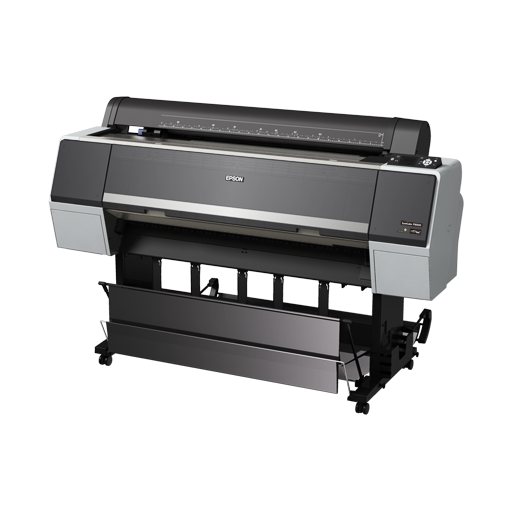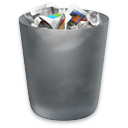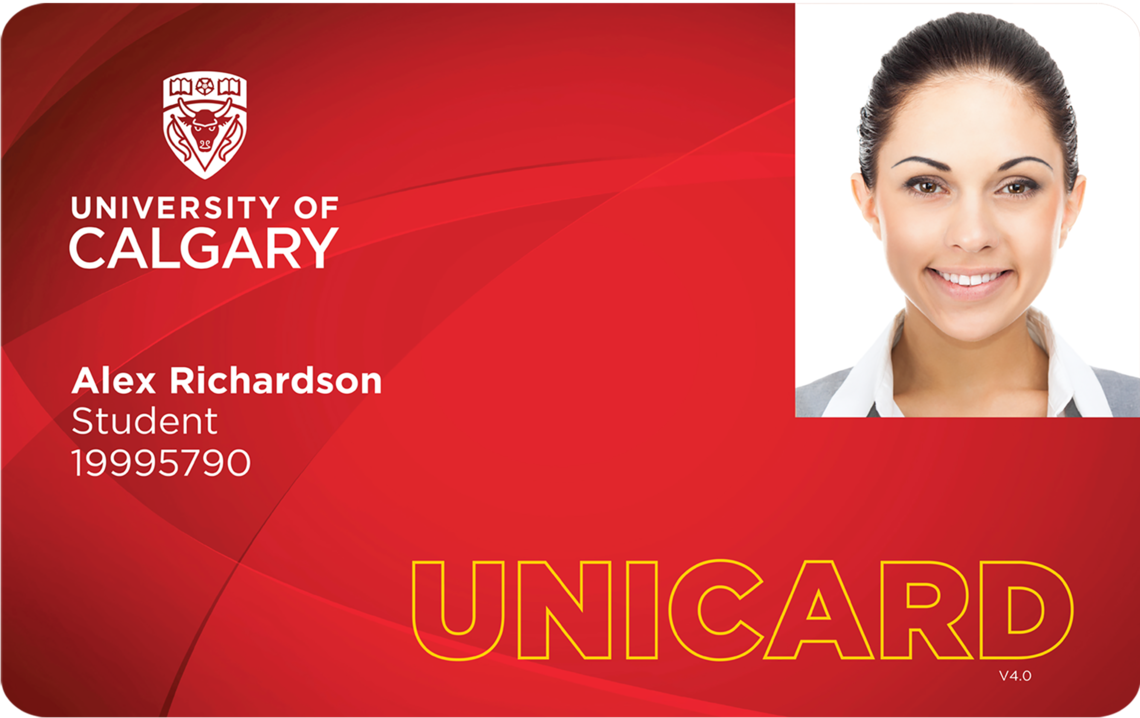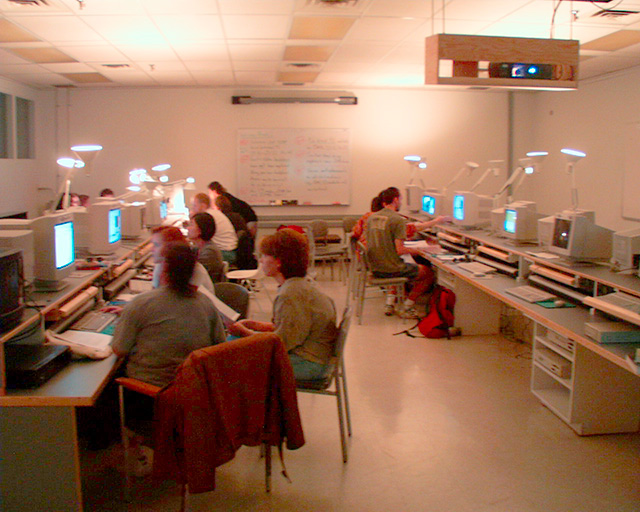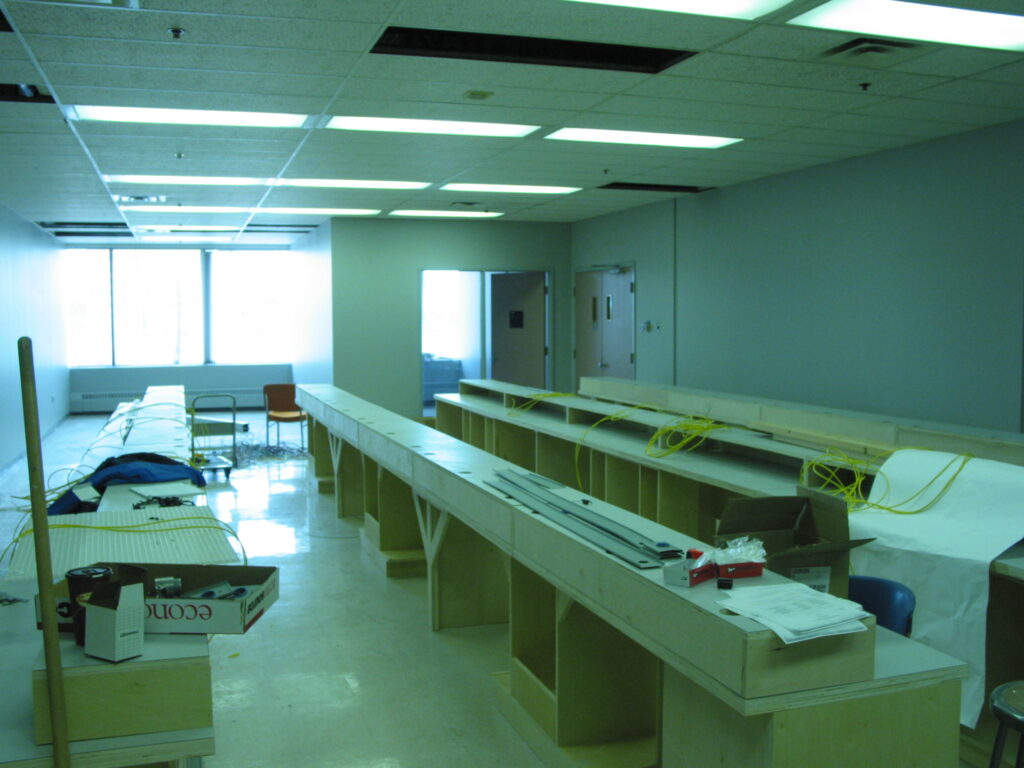Updated 2025-01-13
If you are working remotely for classes or prefer to use your own computer to do work that you would normally do in our Labs, here is how you can obtain your own copy of common Lab software and the associated cost if applicable.
Jump to: Adobe apps • Final Cut Pro • Logic Pro • Ableton Live • Max • ZBrush • Vectorworks
Adobe Products (Photoshop, Lightroom, Illustrator, Premiere Pro)
TL;DR: $135 for 3 months of any app; Photoshop/Lightroom $156/year or $97.50 for 3 months
Platforms: macOS, Windows
Free Trial: 7 days
Student Discount Price: $312 per year for entire Creative Cloud suite ($552/year after the first year); a regular price option may be better if you only need Photoshop or Lightroom (see below)
Regular Price:
$864 per year for Creative Cloud suite
$156 per year for CC Photography plan with 20 GB cloud storage (Photoshop + Lightroom) or Lightroom with 1 TB cloud storage
$312 per year for CC Photography plan with 1 TB cloud storage (Photoshop + Lightroom)
$348 per year for Illustrator or Premiere Pro only
$45 per month for any one app (no annual commitment required)
License: Subscription (only)
Adobe offers all of its products as subscriptions; you must pay Adobe a monthly or annual fee (billed monthly) to continue to use the software. Which app or combination of apps you need and for how long will determine which option is the most cost-effective for you — the student discount may not be the best deal for you if you only need one app or only need three months of use. Subscriptions are priced in Canadian Dollars.
All of Adobe’s annual subscriptions can be billed on a monthly basis, but if you cancel early, you pay a 50% penalty for each month you cancel. For example, if you only needed to use Photoshop or Lightroom for three months for a Fall or Winter class, your best choices would be Adobe’s regular offers, not the student offer:
- $156 for a one-year subscription to the CC Photography plan with 20 GB storage ($12.99/month × 12 months; no student discount)
- $97.50 for 3 months of CC Photography plan (20 GB) subscription ($12.99 × 3 months + $6.50 × 9 month penalty for early cancellation)
For an app like Illustrator or Premiere, your best choices would be:
- $312 for a one-year subscription to the Creative Cloud suite ($25.99/month × 12 months after student discount)
- $195 for 3 months of the CC student discount subscription ($25.99 × 3 months + $13 × 9 month penalty for early cancellation)
- $135 for 3 months use of the app ($44.99/month × 3 months, no student discount)
Once you need two or more Adobe apps (other than Photoshop + Lightroom), you are almost certainly better off subscribing to the full Creative Cloud plan for students. Note that the price increases by 50% after the first year of your subscription if you choose to use the software long-term.
If you do not wish to subscribe to Adobe’s software, there are now excellent alternative apps that can accomplish much of what Adobe’s products do and even export to Adobe’s file formats. For example, perpetual licenses for Affinity Photo (similar to Photoshop) and Affinity Designer (similar to Illustrator) are available for $100 each, which includes an iPad license, and are available on a six-month free trial as of Fall 2024. For video editing, Final Cut Pro (see next entry) is available as a free trial and DaVinci Resolve is available in a free version, and there are open source apps like Shotcut and OpenShot that may also be suitable. Check with your instructor to see if such alternatives would be suitable for your particular class.
Final Cut Pro
TL;DR: 90 day free trial
Platform: macOS and iPadOS (limited)
Free Trial: 90 days (macOS), 30 days (iPadOS)
Student Discount Price: $250 as part of a bundle for macOS (no Education price for iPadOS)
Regular Price: $400 (no bundle) for macOS, $6.99/month or $69/year for iPadOS
License: Perpetual (one-time payment) for macOS, Subscription for iPadOS
Apple extended their normal 30 day trial on Final Cut Pro during the pandemic, so tactical use of the macOS trial could get you through a Term without needing to purchase the app. If you wish to use the app longer than that, the best value for dollar is Apple’s “Pro Apps for Education” bundle, which includes apps like Compressor and Logic Pro (Apple’s digital audio workstation app — think GarageBand on steroids). Note that the iPadOS version of Final Cut Pro cannot exchange projects with the macOS version — you can import your work from iPad to Mac but not the other direction.
Logic Pro
TL;DR: 90 day free trial
Platform: macOS and iPadOS
Free Trial: 90 days (macOS), 30 days (iPadOS)
Student Discount Price: $250 as part of a bundle for macOS (no Education price for iPadOS)
Regular Price: $280 (no bundle) for macOS, $6.99/month or $69/year for iPadOS
License: Perpetual (one-time payment) for macOS, Subscription for iPadOS
Apple didn’t have a trial version of Logic Pro prior to the pandemic, as most people’s needs were met with GarageBand. Tactical use of this new trial option could get you through a Term without needing to purchase the app. If you wish to use the app longer than that, a small discount comes by purchasing Apple’s “Pro Apps for Education” bundle, but you also receive Final Cut Pro video editing software (normally $400 itself — think iMovie on steroids). The new version for iPad can exchange projects back and forth between itself and the macOS version.
Abelton Live
TL;DR: $54 for Intro, $33/month (rent-to-own) for Suite
Platform: macOS, Windows
Free Trial: 30 days
Student Discount Price: 50% off for Intro, Standard, and Suite licences. Monthly option ($33/month) available for Suite (rent-to-own).
Regular Price: $109 for Intro, $389 for Standard, $779 for Suite (which is what we deploy in the Labs).
License: Perpetual
With a 30 day free trial, you may be able to get through a Term without purchasing Live. If you do decide to purchase your own copy, Live is sold as a perpetual licence in three tiers: Intro, Standard, and Suite. The differences among the tiers are described in detail on the Ableton website. The Intro tier is quite affordable at $54. If you need the full Suite, Ableton offers a rent-to-own option, where you pay about $33 per month for a licence. You can stop paying at any time and simply give up use of the licence. However, if you pay for 12 months (and those months do not need to be consecutive), you then own a perpetual licence for Live Suite.
Any perpetual licence is upgradable to a regular (non-student) licence when you pay to upgrade to the next major version. Student licences are only dependent on your student status at the time of purchase, so you can continue to use the licence you purchase as a student after you graduate. There is no functionality difference between student and regular licences.
Max
TL;DR USD$367 or USD$20/month
Platform: macOS, Windows
Free Trial: 30 days
Student Discount Price: USD$367 for a perpetual licence or USD$132 for a one-year subscription.
Regular Price: USD$586 for a perpetual licence or USD$292 if you own Ableton Live Suite; subscription is USD$20/month or USD$176/year.
License: Perpetual, Subscription
With a 30 day free trial, you may be able to get through a Term without purchasing Max. If you need just a little longer than that, then the un-discounted subscription rate of USD$20 per month may be worth it. Cycling ’74 offers both perpetual and subscription licencing and we are not expecting that to change. If you are willing to subscribe for a year, the student rate is about 25% cheaper.
Depending on the needs of your studies, you may be able to work with the open source app PureData — check with your instructor.
ZBrush
TL;DR: $90 for one year
Platform: macOS, Windows
Free Trial: 14 days (as part of the Maxon One bundle)
Student Discount Price: Maxon One bundle (including Cinema 4D and other apps) $90 per year
Regular Price: $516 per year or $65 per month
License: Subscription
We know that ZBrush is quite costly — it’s a professional tool used in the industry and it is priced accordingly. The Student pricing is quite reduced but expect to pay a high subscription price once you graduate (much like with Adobe software). Due to a change in ownership of the company that makes ZBrush, the perpetual license model was eliminated with ZBrush 2022.
Vectorworks
TL;DR: Free student licence
Platform: macOS, Windows
Student Offer: Free student license
Regular Price: $4200 (!!) for perpetual license or $175-210 per month for subscription
License: Perpetual or Subscription
Here’s another professional-grade tool that students can not reasonably afford themselves. Luckily, it is now offered for free to Education users. Use the link above to download a copy for your own computer.

